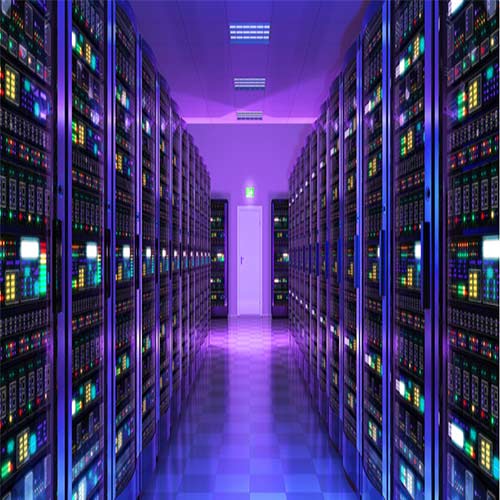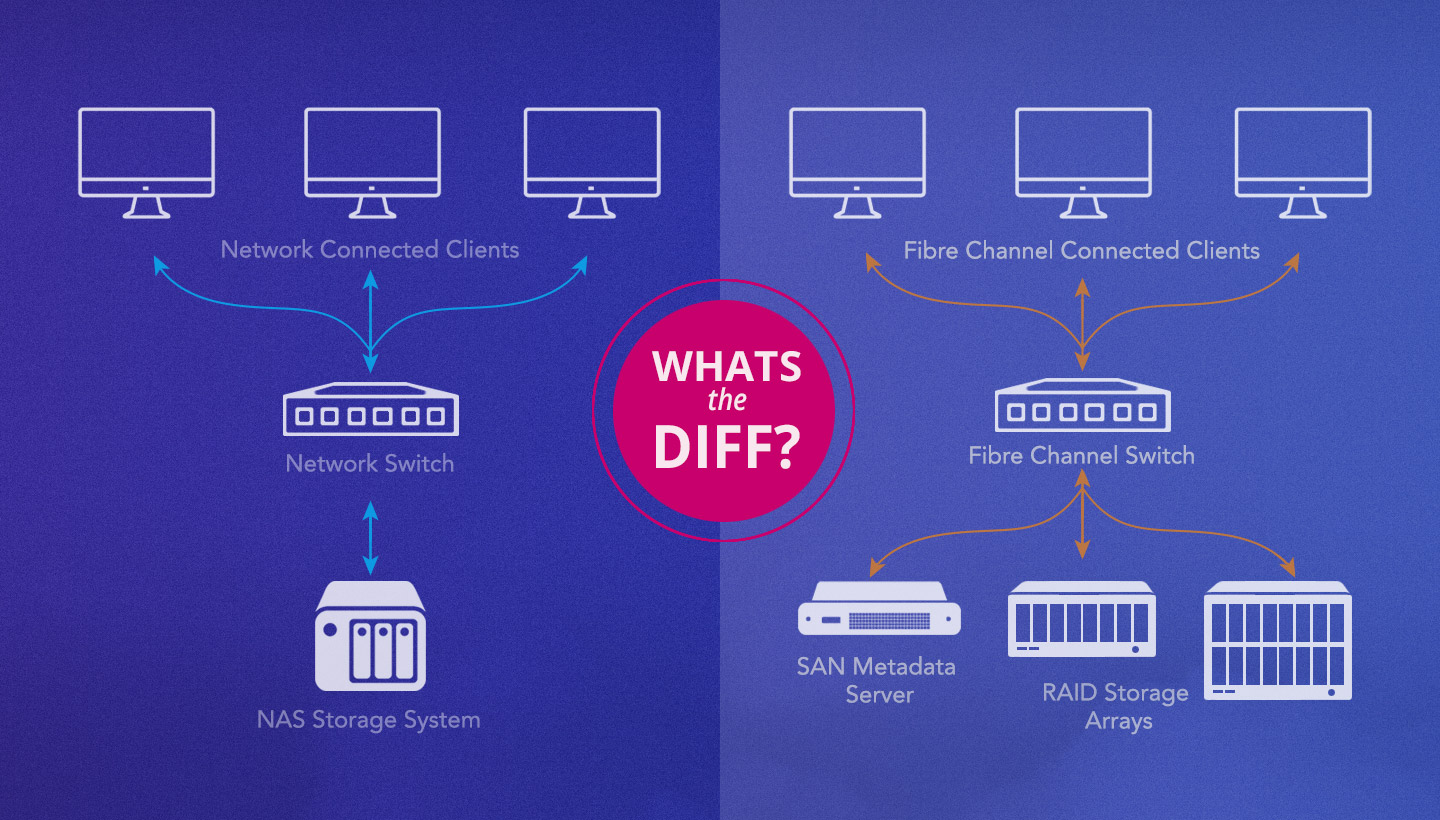What is NAS? Check it from 0 to 100
NAS or network-attached storage (NAS) is a file-oriented storage that allows network users to access data by connecting to the network like a node. All clients and users in a local network (LAN) will have access to this storage space using a standard Ethernet connection.
Network storage devices are usually without a screen, keyboard, mouse and other hardware equipment and can be managed and configured using tools such as a browser. Our goal in this article is to review and provide a complete explanation of the storage connected to the network, which is suggested to stay with us until the end.
What is meant by Network-attached storage or NAS?
As mentioned, NAS stands for Network-attached storage, which literally means storage connected to the network. This device is used in small and local networks or LAN (local area network) to provide access to all files and documents stored between heterogeneous clients and users. To configure and manage the NAS device, it is necessary to do this with browser-based tools, because the human-computer interface hardware such as screen, keyboard, etc. is not built into this device.
Like servers, printers, computers, switches, etc., storage devices connected to the network are also known as a node and will be added to the network using a standard Ethernet cable connection. Due to the low cost of preparation and installation, easy configuration and use, high capacity and simple access, this device is considered one of the popular options in any network. Network-attached storage performs its tasks well with the support of cloud layers, archiving and data backup.
SAN and NAS are the two main types of network storage, the former being used to store structured data and blocks in a database. While the second type can be used to store unstructured files and documents such as video, photo, audio, data related to a website, text files, etc.

What are the components of NAS?
NAS devices have different components that allow it to be used in different ways.
- Hardware: NAS includes dedicated hardware. This hardware is called a NAS box, unit, server, or head, and it works like a server with 2 to 5 storage drives, a CPU, and memory.
- Networking: NAS devices are connected to computers or other devices over a network using an Ethernet cable or Wi-Fi. These devices connect the NAS to other devices for charging, backup or data transfer through the port.
- Processor: NAS devices have a CPU that is used for computing intelligence and power for file system management, read/write operations, running applications, processing multimedia files, managing multiple users, and integrating with the cloud.
- Software: A pre-configured software is installed on the NAS hardware. The same operating system that handles the NAS device’s data storage and file sharing requests is responsible for running this program. Of course, these programs will vary depending on the features of the NAS box.
What are the protocols used by NAS?
The protocol used by NAS to communicate between devices in the network is TCP/IP and file-based protocols such as NFS, SM/CIFS and AFP.
- NFS: Network file system commonly used for Unix and Linux systems and works on any hardware, network architecture or operating system.
- SMB: Server Message Block, which is commonly used for Microsoft Windows and is also known as Microsoft SMB protocol.
- AFP: Apple’s archiving protocol that is exclusive to Apple’s MacOS devices.
The most important advantage of using NAS (Network Attached Storage)
The purpose of preparing a NAS device and in fact the main advantage of using it is the ease of access to documents and files. If we want to use an example to help better understand the concept of using Network-attached storage, suppose you work in an organization where there are no modern facilities such as a network to access resources. Now, to do your work, you need to have a series of documents and specific data at your disposal. For this purpose, you have to go to the archive section and search for the desired information for hours.
After some time, your company and organization decided to make the work easier for employees by installing and running a network and finally transferring all resources and data to it. As a result, to access any type of file, you only need to connect to the network and find it in less than a few seconds. But the problem that will arise for the organization is the integration of the devices related to document storage.
Because in large and developed companies and organizations, the volume of data and information is so large that it will be necessary to configure and install hundreds or even thousands of server files. Also, with the passage of time, the amount of data has been increased day by day, and this storage system must also have high scalability and flexibility.
It is at this time that NAS can solve all these problems. This is because, in addition to the integration of all storage devices, it is designed to be scalable and flexible based on the size of a company.
According to the explanation given, it should be said that from small to large networks of Network-attached storage for more effective configuration and distribution of data among heterogeneous employees (employees who need remote access or may work in different time frames, such as telecommuting) is used By installing and adding multiple storage disks or replacing them with larger ones, the network infrastructure can be expanded as the company grows.
Or what are the disadvantages of NAS?
Now that we know the advantages of the storage space connected to the network, it is not bad to take a look at its disadvantages to make a more informed decision about its use.
- Because NAS is physically located as a piece of hardware at the server location, it is more susceptible to data loss due to natural disasters or device theft.
- Heavy NAS usage can cause congestion on the shared LAN and affect other users. This technology is not suitable for applications that transfer large amounts of data.
- NAS is a shared storage space. That is, the system management should set a limit for each user’s storage so that one user’s excessive use does not harm other users.
Using flash storage in improving the performance of Network-attached storage
One of the biggest drawbacks of using Network-attached storage is the disruption when the request and input load increase. That is, if a large number of users send commands to this device to download data at the same time, there is a possibility of not having enough traction and eventually the system will stop.
An efficient solution to solve this problem is to use fast memory cards. In the old NAS systems, all the storage hardware is of the HDD type, which has a slower speed than the new generations of storages. Therefore, replacing them with more advanced hardware will be a sure solution.
Flash storage is one of the fast storage spaces that is used in some network storage configurations instead of HDD or in parallel with it. It means that a whole column of flash storage can be configured to work with HDD or completely replace the old storage.
Examples of Network Attached Storage (NAS) applications
NAS applications are different in home and enterprise use, and based on the programs running on this storage system, the type of HDD used may be different. Sharing Word, Excel and other Microsoft programs among users is a common process like backup. In case, Network-attached storage will be used to manage a large volume of multimedia data such as images, videos, sounds, etc.
Home users certainly rely on network-attached storage for simpler tasks than enterprise developers.
Among these items are:
- Smart TV storage management
- Management and updating of security systems
- Management of different parts of the consumer-based Internet of Things
- Create and play a media service such as streaming video
- Management of torrent files
- hosting personal cloud servers
- Creating and developing a personal website or even testing one
But there are uses of NAS in industrial uses and organizations such as:
- As a backup point for data recovery and information archiving in case of disaster
- Testing, creating and developing server-side web applications
- Hosting messaging and chat programs
- Hosting server-based and open source applications such as customer communication
- Human resources management and overall planning related to employees and employees
- Providing email, multimedia files, printed documents, etc.
will be. As a clear example, when a company deals with a large volume of multimedia files such as photos (Instagram), it cannot use cloud spaces because of the delay. Instead, by installing and configuring a network-attached storage system along with this cloud storage, it is better to store and archive data in real time.
It should be noted that high-end NAS products consist of disks with very large storage memory. The connections and configuration of these disks are done in such a way that a unified space with several hard disks is provided for better performance, more redundancy and higher availability.











